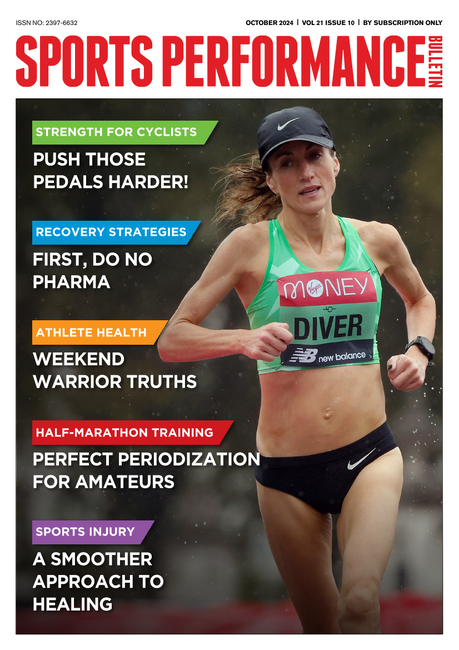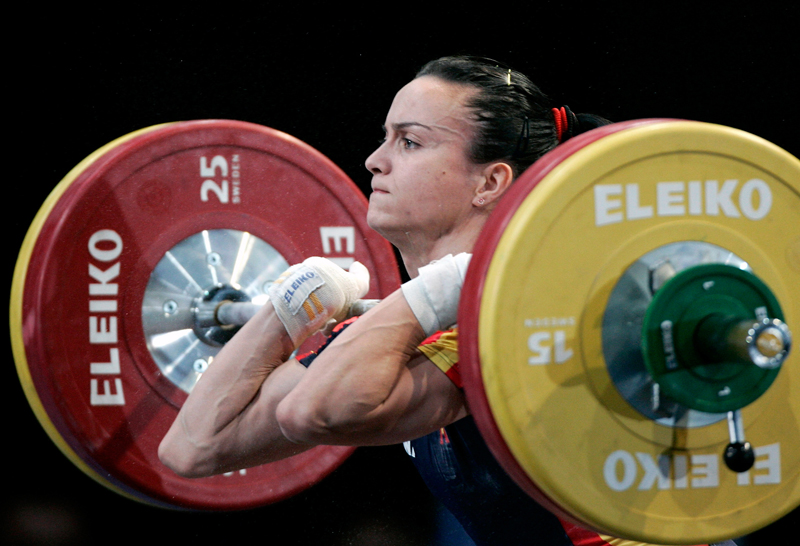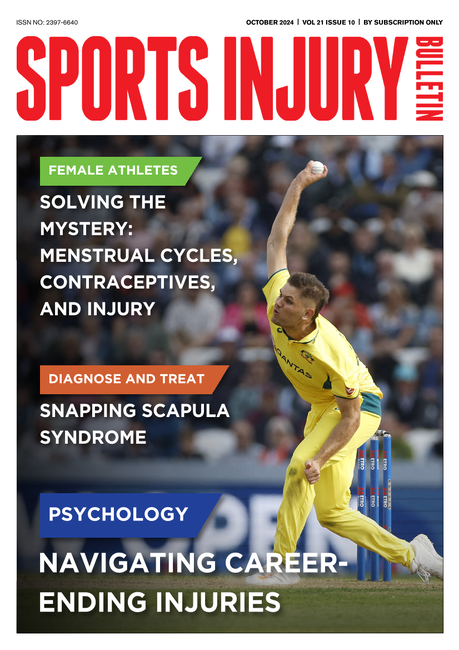There are a number of factors that influence flexibility.1. An older muscle has more inherent stiffness due to the morphological changes in the muscle and collagen in the connective tissues.
2. A muscle that has been immobilised with a cast will demonstrate increase in stiffness over time (longer than four weeks).
3. Excessive training causes more crosslinking to occur between collagen fibres and therefore increases stiffness.
4. Excessive repeated muscle contractions cause high volumes of neural discharge. A muscle can remain in a state of high resting tone following training sessions.
5. Increase in temperature causes a decrease in muscle stiffness. This can be environmental temperature or temperature increases induced by friction of muscle contraction. We therefore tend to be less stiff around 2.00 in the afternoon.
6. Finally, an increase in intramuscular fluid (fluid in the muscle cell) can increase stiffness due to a splinting effect. This is the proposed reason why use of creatine monohydrate tends to make muscles feel stiffer.
More about collagen
I mentioned earlier that the connective tissues in and around muscle are considered to be 'passive' or 'non-contractile'. The principal structure in these tissues we need to consider is collagen. A key term used in physics and biomechanics to describe the way collagen behaves is 'viscoelasticity'.Viscoelastic tissues are made up of viscous and elastic properties. A viscous tissue will deform and stay deformed permanently - if you pull on a piece of play dough, for instance, it will keep that shape. An elastic tissue will return to its original length when the force is removed. For example, pulling on a rubber band and letting go - the band snaps back to its original length. Viscoelasticity describes a property of tissues (collagen being one of those tissues) whereby deformation/lengthening of a tissue is sustained and the recovery is slow and imperfect when the deforming force has been removed. That is, it will stretch, then stay stretched for a while before slowly returning to its original length. Viscoelasticity tells us a number of practical things about stretching the connective tissues in muscle:
- Studies on the cyclic loading of tissues suggest that most deformation occurs in the first stretch, and after four stretches there is little change in ultimate length. Therefore there is no extra benefit from stretching a muscle 10 times in one session.
- It takes 12-18 seconds to reach stress relaxation, so there is no need to hold a stretch for longer than 20 seconds
- Greater peak tensions and more energy are absorbed the faster the rate of stretch. This means that a tissue will generate greater tension if the rate of stretch is faster and therefore not achieve the same length as a tissue undergoing a slow stretch. That is, do passive stretches SLOWLY.
- Once elongated, length changes are not rapidly reversible due to the viscous nature of the tissue. However, deformations are not permanent because the elastic properties will eventually bring the tissue back to its original length. Lasting changes come from adaptive remodelling of the connective tissues, not mechanical deformation. One study in South Africa showed that stretching every four hours was the most effective way to achieve elongation in a muscle. This may suggest that the temporary change in length following a stretch may start to regress after four hours (Grace Hughes, unpublished study).
How stretching happens
A number of physical properties of viscoelastic tissues help describe how these tissues elongate with stretching. These properties are creep, load relaxation and hysteresis: Creep describes the ability of a tissue to elongate over time when a constant load is applied to it. For example, if we applied 10 kg of force to our leg in order to stretch our hamstring, we might initially get our leg to 90 degrees before our tissues prevented further movement. If we sustained that load, we would find that our leg would gradually 'creep' a few degrees over a period of time.Load relaxation describes how less force is required to maintain a tissue at a set length over time. Using the above example again, if we applied 10 kg of force to get our leg to 90 degrees, we would find that less force would be needed (9,8,7 kg etc..) to keep it at 90 degrees.
Hysteresis describes the amount of lengthening a tissue will maintain after a cycle of stretching (deformation) and then relaxation. Again, let's assume that if we gained an extra 10 degrees of range in hamstrings after the stretches described above, we would maintain that range for some time after the load was removed.
Neuromuscular considerations
Certain neuromuscular mechanisms acting on muscles influence 'tension' and have important implications for the value of stretching. These mechanisms include the stretch reflex, autogenic inhibition and reciprocal inhibition.- The stretch reflex is governed by a long thin receptor in muscles called a 'muscle spindle'. The spindle's role is to let our feedback systems know about muscle length and the rate of muscle lengthening. When a muscle is rapidly stretched, the spindle (via a loop of nerves) triggers a reflex contraction of the muscle undergoing stretch. A high-speed stretch will therefore trigger the spindle and a reflex contraction of the muscle will limit its ability to stretch.
- The spindle is also responsible for the phenomenon known as reciprocal inhibition. What happens here is that if a muscle contracts, the opposite or antagonistic muscle will relax to allow the movement to occur without resistance. For example, if the quadriceps are contracted, the hamstrings should relax to allow the knee to straighten.
- The Golgi Tendon Organ (GTO) is the important receptor to consider in 'autogenic inhibition'. The role of the GTO is to provide information on tension increases in muscles. This tension can come from contraction or stretch. The GTO connects with a small nerve cell in the spinal cord that inhibits or relaxes the muscle where the GTO is found. The GTO will trigger if a stretch is sustained (for longer than six seconds) or if the muscle contracts forcefully.
- The way these mechanisms are utilized will be discussed below under the heading of Proprioceptive Neuromuscular Facilitation- type stretching.
The theory behind different stretching types
STATICHeld static stretches are done so that the joints are placed in the outer limits of the available range and then subjected to a continuous passive stretch (gravity, weights, manual). One obvious benefit is that the chance of injury is minimal. This type of stretching is ideal to stretch the connective tissue/non-contractile elements since it makes use of the viscoelastic properties to cause elongation of the tissue. Furthermore, it makes use of autogenic inhibition to trigger a relaxation in the muscle (remember the six- second rule).
DYNAMIC
1. Dynamic Range of Motion: this describes a type of stretch whereby a muscle is taken through a full, slow and large amplitude movement. The opposing muscles are used to produce the force in this type of stretching. This type of stretching is done under control and is not jerky in nature.
2. Ballistic: the type that is done fast and rapidly and through large ranges of motion. An example is leg swings to stretch the hamstrings. The benefit of this type of stretching is that it is sport- specific to ballistic sports and it allows integration of the 'stretch reflex' if done quite often over a period of time. As the neuromuscular system adapts to this stretching, the stretch reflex will minimise its contribution to limiting muscle range.
3. Bouncing: similar to ballistic, but it is performed in small oscillations at the end of range. The dangers of (2) and (3) are that they can lead to significant muscle soreness caused by the rapid lengthening of the muscle. This in itself initiates the stretch reflex and increases muscle tension. Furthermore, it fails to provide adequate time for the tissues to adapt to the stretch.
PNF (PROPRIOCEPTIVE NEUROMUSCULAR FACILITATION)
PNF uses the concept that muscle relaxation is fundamental to elongation of muscle tissue. In theory, it is performed in a way that uses the proprioceptive abilities of the GTO and muscle spindle to relax or inhibit the muscle in order to gain a more effective stretch. It does so using autogenic inhibition and reciprocal inhibition. PNF stretching exists in a number of different forms, but the only ones discussed here will be the contract relax (CR), hold-relax (HR) and contract relax and antagonist contraction (CRAC) methods.
a) Contract Relax (CR) The muscle to be stretched is passively taken to end of range. Maximum contraction of the muscle to be stretched is performed against resistance (usually another person). With this form of contraction, the muscle is allowed to shorten during an isotonic contraction. This is continued for at least six seconds (which allows autogenic inhibition to occur). The muscle is then relaxed and taken to a new range and held for about 20 seconds. This can be repeated 3-4 times.
b) Hold Relax (HR) Very similar to contract relax as above, but the contraction type is static/isometric. The muscle to be stretched is passively taken to end of range. Maximum contraction of the muscle to be stretched is performed against resistance (usually another person). With this form of contraction, the muscle does not shorten during its isometric contraction. This is continued for at least six seconds (allowings autogenic inhibition to occur). The muscle is then relaxed and taken to a new range and held for about 20 seconds. This can be repeated 3-4 times.
c) Contract Relax Antagonist Contraction (CRAC) The first part of this stretch is similar to the CR method above; however, when the muscle to be stretched is relaxed after its six- second contraction, the OPPOSITE OR ANTAGONIST muscle is contracted for at least six seconds (allowing reciprocal inhibition to occur). The antagonist is then relaxed and the stretched muscle is taken to a new range.
So there you have it! In the last few thousand words I have attempted to give a Readers Digest version of the background to the theory of stretching.
Chris Mallac









